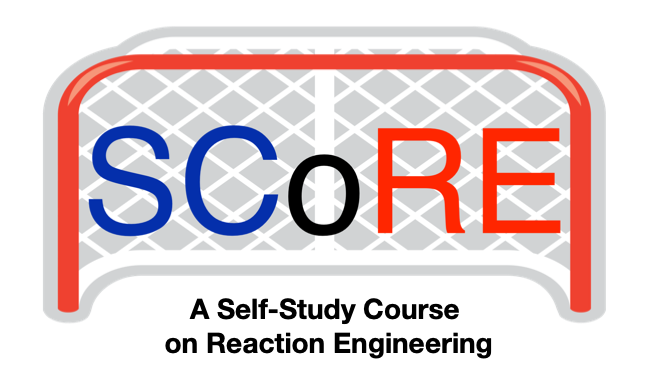
Class 10
BSTR Response
Class 10 introduces the analysis of batch, stirred-tank reactors (BSTRs). It describes the reactor, how they are operated, and how they are modeled. Qualitative and quantitative analysis are illustrated.
Learning Outcomes
After completing Class 10 you should…
- be able to list the assumptions in the ideal BSTR model equations
- be able to list advantages and disadvantages of BSTRs
- know that BSTR operation often occurs in sequential stages
- be able to define turnaround time and net rate for a non-continuous reactor
- be able to perform a qualitative analysis of the response of a BSTR
- be able to identify the BSTR design equations on the SCoRE Equation Summary
- be able to calculate the response of a BSTR given sufficient information about how it is being operated
Preparation Assignment
- Read the body of Chapter 9, and Examples 9.6.1 and 9.6.2 of Reaction Engineering Basics
- Watch
 Class 10 Preparation Video
Class 10 Preparation Video - Watch
 Example 9.6.2(forthcoming on YouTube)
Example 9.6.2(forthcoming on YouTube) - Watch either
 Example 9.6.2 Python Calculations Video(forthcoming on YouTube)
Example 9.6.2 Python Calculations Video(forthcoming on YouTube) Example 9.6.2 Matlab Calculations Video(forthcoming on YouTube)
Example 9.6.2 Matlab Calculations Video(forthcoming on YouTube)
- If you need a refresher on identifying and solving IVODEs or DAEs
- Read Sections 1, 3, 4.2, 5.2, and 5.3 of Appendix F of Reaction Engineering Basics
- Watch the videos on the Equations and Solvers, Computer Code, Solving IVODEs, and Solving DAEs pages in the Computational Suplements section of SCoRE
- Python
- Matlab
Class 10
 Class 10 Video (forthcoming on YouTube)
Class 10 Video (forthcoming on YouTube)
Practice Assignment
 Class 10 Practice Assignment Narrative (forthcoming)
Class 10 Practice Assignment Narrative (forthcoming) Class 10 Practice Assignment Solution (forthcoming)
Class 10 Practice Assignment Solution (forthcoming)
This website is licensed under the Creative Commons Attribution-Non-Commercial-NoDerivatives 4.0 International License (CC BY-NC-ND 4.0).